
The Kalmar Union was a personal union in Scandinavia, agreed at Kalmar in Sweden, that from 1397 to 1523 joined under a single monarch the three kingdoms of Denmark, Sweden, and Norway, together with Norway's overseas colonies.
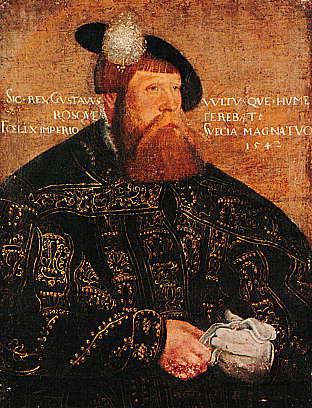
Gustav I, born Gustav Eriksson of the Vasa noble family and later known as Gustav Vasa, was King of Sweden from 1523 until his death in 1560, previously self-recognised Protector of the Realm (Riksföreståndare) from 1521, during the ongoing Swedish War of Liberation against King Christian II of Denmark, Norway and Sweden. Gustav rose to lead the Swedish War of Liberation following the Stockholm Bloodbath, where his father was executed. Gustav's election as king on 6 June 1523 and his triumphant entry into Stockholm eleven days later marked Sweden's final secession from the Kalmar Union.
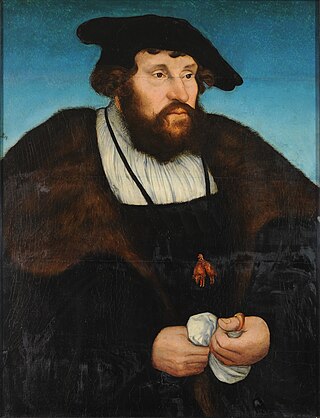
Christian II was a Scandinavian monarch under the Kalmar Union who reigned as King of Denmark and Norway, from 1513 until 1523, and Sweden from 1520 until 1521. From 1513 to 1523, he was concurrently Duke of Schleswig and Holstein in joint rule with his uncle Frederick.

Christian V was king of Denmark and Norway from 1670 until his death in 1699.

John was a Scandinavian monarch under the Kalmar Union. He was king of Denmark (1481–1513), Norway (1483–1513) and as John II Sweden (1497–1501). From 1482 to 1513, he was concurrently duke of Schleswig and Holstein in joint rule with his brother Frederick.

Charles VIII, contemporaneously known as Charles II and called Charles I in Norwegian context, was king of Sweden and king of Norway (1449–1450).

The Early Vasa era is a period that in Swedish and Finnish history lasted between 1523–1611. It began with the reconquest of Stockholm by Gustav Vasa and his men from the Danes in 1523, which was triggered by the event known as the Stockholm Bloodbath in 1520, and then was followed up by Sweden's secession from the Kalmar Union, and continued with the reign of Gustav's sons Eric XIV, John III, John's son Sigismund, and finally Gustav's youngest son Charles IX. The era was followed by a period commonly referred to as the Swedish Empire, or Stormaktstiden in Swedish, which means "Era Of Great Power".

The Swedish War of Liberation, also known as Gustav Vasa's Rebellion and the Swedish War of Secession, was a rebellion and a civil war in which the nobleman Gustav Vasa deposed King Christian II from the throne of Sweden; ending the Kalmar Union between Sweden, Norway, and Denmark.
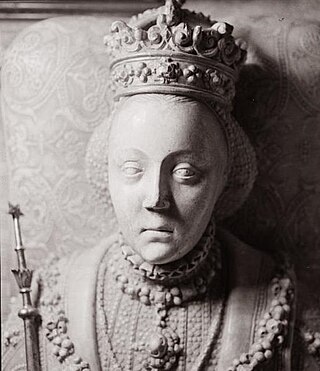
Catherine of Saxe-Lauenburg was the first wife of Gustav I of Sweden and thus Queen of Sweden from 1531 until her death in 1535.

The Count's Feud, also called the Count's War, was a war of succession that raged in Denmark in 1534–36 and brought about the Reformation in Denmark. In the international context, it was part of the European wars of religion. The Count's Feud takes its name from the Protestant Count Christopher of Oldenburg, who supported the Catholic King Christian II, deposed in 1523, over the election of Christian III, a staunch Protestant who had already implemented Lutheranism as the state religion in Schleswig and Holstein in 1528.
The Military History of Denmark is centered around an involvement in wars in Northern Europe since 793 and, recently, elsewhere.

Vyborg Castle is a fortress in Vyborg, Russia. It was built by the Swedes during the Middle Ages around which the town of Vyborg evolved. The castle became the stronghold of the Swedish realm in the Karelian region. Throughout the centuries, it was the first defence of the kingdom against the Russians. Its military and strategic status in the late Middle Ages was second only to the fortified capital Stockholm. Currently it serves as the site of Vyborg Regional Museum.
The Fief of Viborg (1320–1534) was for two centuries a late medieval fief in the southeastern border of Finland and the entire Swedish realm. It was held by its chatelain, a fief-appointed feudal lord.

The Free and Hanseatic City of Lübeck was a city-state from 1226 to 1937, in what is now the German states of Schleswig-Holstein and Mecklenburg-Vorpommern.

The Reformation in Denmark–Norway and Holstein saw the transition from Catholicism to Lutheranism in the realms ruled by the Danish-based House of Oldenburg in the first half of the sixteenth century. After the break-up of the Kalmar Union in 1521/1523, these realms included the kingdoms of Denmark and Norway and the Duchies of Schleswig and Holstein, whereby Denmark also extended over today's Gotland and Øsel in Estonia.
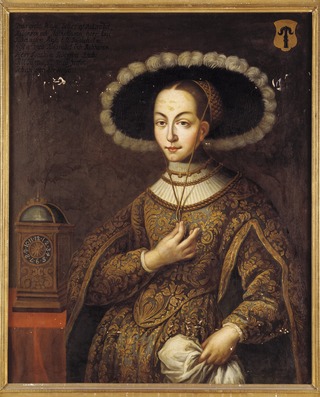
Margareta Eriksdotter Vasa, also called Margareta Vasa and Margareta of Hoya, was a Swedish noblewoman, sister of king Gustav I of Sweden. Between 1525 and 1534, she commanded Vyborg Castle on several occasions during the absence of her spouse.
The Battle of Bornholm was a naval engagement that took place in June 1535. The conflict saw Lübeck and the Hanseatic League engaged against the forces of Sweden, Prussia, Holstein, and Denmark. The Battle of Bornholm was part of the larger Count's Feud.
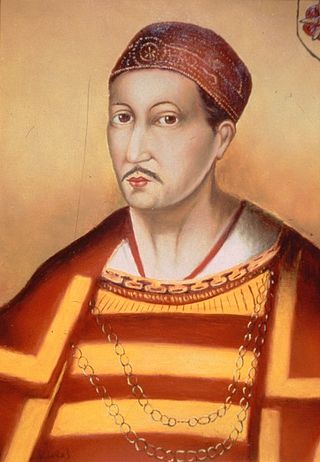
Bernard VII of Lippe was the ruler of the Lordship of Lippe from 1429 until his death. Because of the many bloody feuds in which he was involved, he was nicknamed "the Bellicose". He is the longest-ever ruling European nobleman.
John VII of Hoya was a German count and army commander in the service of Lübeck and Sweden.
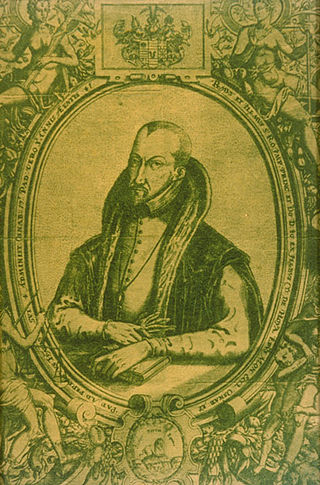
Johann IV of Osnabrück was a German nobleman and prince-bishop. From his father Johann VII's death in 1535 onwards he was known as Count (Graf) Johann VIII von Hoya zu Stolzenau. From 1553 he was Prince-Bishop of Osnabrück, then from 1566 Prince-Bishop of Münster and finally from 1568 administrator of the Bishopric of Paderborn.















